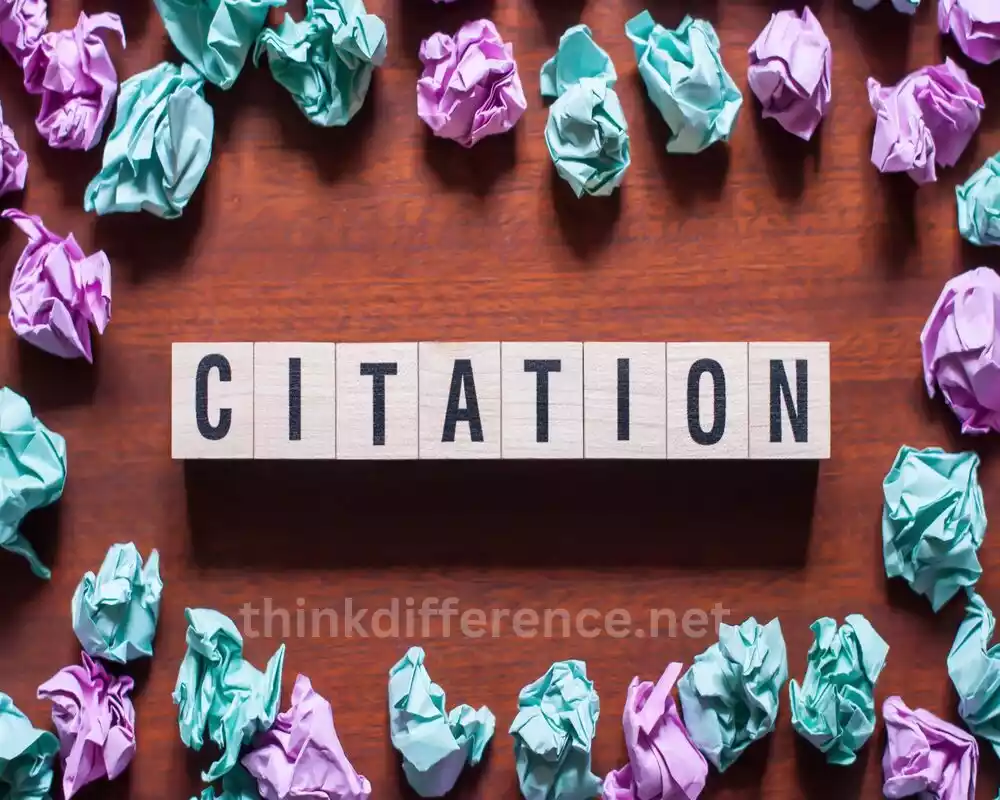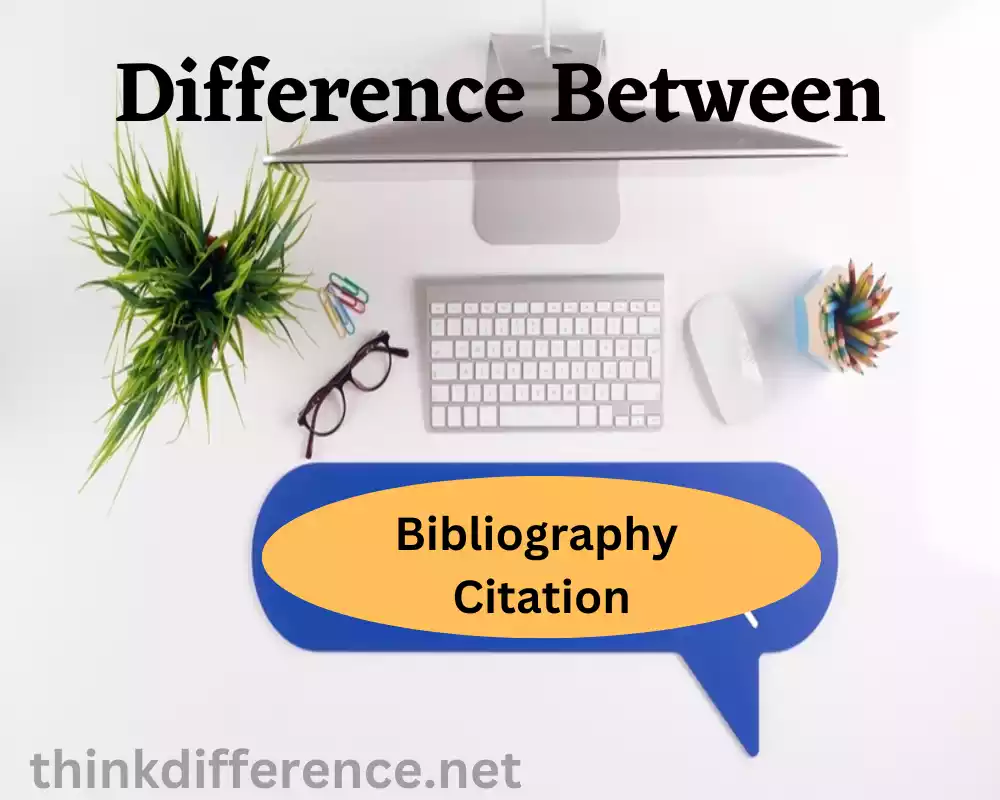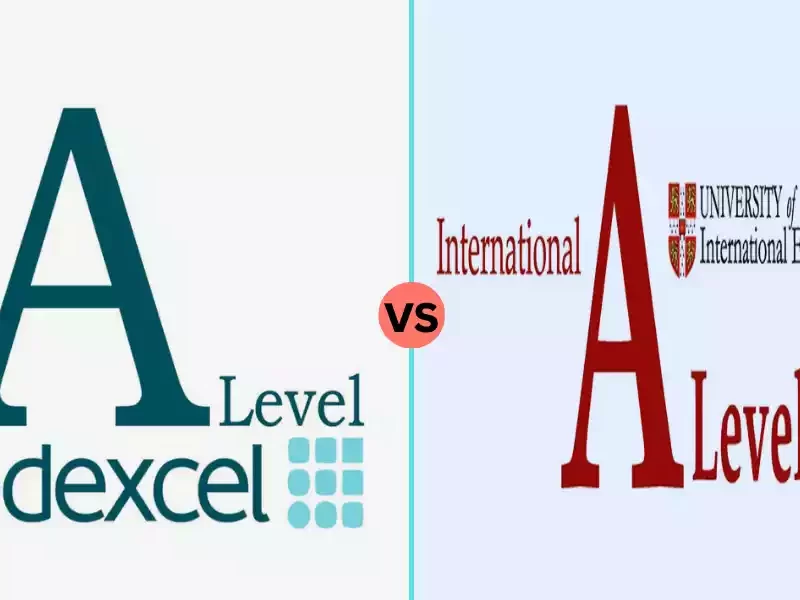Bibliography and Citation are integral in recognizing the sources utilized in any piece of writing, either through bibliographies or acknowledgement within texts. A bibliography lists every source consulted or referenced during research while acknowledgments within texts acknowledge each source separately.
Importance of Bibliography and Citation
Citations and bibliography play an invaluable role in academic writing. Here are just a few reasons for their importance:
- Giving Credit: Bibliographies and citations allow authors to give credit to the original creators and researchers whose work they have used and relied upon. It acknowledges their contributions and prevents plagiarism.
- Academic Integrity: Bibliographies and citations uphold the principles of academic integrity by demonstrating that the author has conducted thorough research, used reliable sources and accurately represented the work of others. It shows that the author is building upon existing knowledge and engaging in scholarly discourse.
- Supporting Claims and Arguments: Citations provide evidence and support for the claims and arguments presented in the text. By referencing credible sources, the author strengthens the credibility and validity of their own work. This allows readers to verify the information, evaluate the sources and form their own judgments.
- Enabling Further Research: Bibliographies serve as a valuable resource for readers who wish to explore a topic further. By providing a comprehensive list of sources, a bibliography helps readers locate and access the materials used by the author. It facilitates further study and encourages the development of new research.
- Academic Consistency: Bibliographies and citations ensure consistency and standardization within academic writing. By following specific formatting styles such as MLA, APA, or Chicago, authors adhere to established guidelines that promote clarity, organization and professionalism in their work.
- Avoiding Plagiarism: Bibliographies and citations help authors avoid unintentional or intentional plagiarism. Plagiarism, which involves using someone else’s work without proper acknowledgment is a serious ethical and academic offense. Including accurate citations and a comprehensive bibliography demonstrates respect for intellectual property and safeguards against plagiarism allegations.
- Enhancing the Author’s Reputation: Adhering to proper citation practices enhances an author’s reputation within the academic community. It shows that the author is well-versed in the scholarly conventions of their field and committed to upholding academic standards. This can contribute to the author’s credibility and authority in their respective area of research.
Bibliography and citation play a critical role in academic writing by acknowledging the work of others, ensuring academic integrity, supporting claims, facilitating further research, maintaining consistency, preventing plagiarism and enhancing an author’s reputation. These practices are essential for the growth and advancement of knowledge within the academic community.
What is a Bibliography?
Bibliographies provide readers with all of the resources, from books and articles, websites and other sources that an author used in creating his/her piece of work, providing key details necessary for them to locate as well as verify these resources used by them. Bibliographies should generally appear at the end of an essay, research paper or academic document for easy reference by its readership.

The purpose of a bibliography is to:
- Give credit: It acknowledges the original creators and researchers whose work has been utilized in the author’s own work. By citing these sources in the bibliography, the author gives proper credit to the intellectual contributions of others.
- Support further research: A bibliography serves as a valuable resource for readers who wish to delve deeper into a topic or explore related areas. By providing a comprehensive list of sources, the bibliography facilitates further study and aids in the development of new research.
- Establish credibility: Including a bibliography in academic writing demonstrates that the author has conducted thorough research and relied on reliable sources. It adds credibility and authenticity to the author’s work by showing that it is built upon a foundation of existing knowledge and scholarly discourse.
- Ensure transparency and accountability: By listing all the sources consulted, a bibliography allows readers to evaluate the author’s research process and assess the quality of the sources used. It promotes transparency and accountability in academic writing.
Components of a bibliography typically include:
- Author’s name(s): Name(s) and organizations who are responsible for producing the work being cited should be listed here.
- Title of the source: The title of the book, article, website or other material being cited.
- Publication information: Information regarding where sources were published includes names of publishers and publishing locations as well as publication years.
- Date of publication: The year or date when the source was published.
- Page numbers (if applicable): In the case of specific pages or sections being referenced, the page numbers or page range can be included.
Bibliographies are often formatted according to specific citation styles such as MLA (Modern Language Association), APA (American Psychological Association) or Chicago/Turabian. These styles provide guidelines on how to format and present the bibliographic information consistently and accurately.
What is Citation?
Citation refers to the specific reference or acknowledgment of a source within the text of a research paper, essay or any scholarly document. Citing sources is the practice of providing details of an article’s source(s), such as author name and title. book/page number/number as appropriate to establish credit and provide evidence supporting ideas presented within. This practice helps provide credit where due.

The purpose of citation is to:
- Give credit: By citing sources, authors attribute the ideas, data and words they have borrowed from others. This gives proper credit to the original creators and researchers whose work has influenced or contributed to the author’s own work.
- Support claims and arguments: Citations provide evidence and support for the claims, arguments or statements made in the text. They demonstrate that the author has done thorough research, engaged with existing scholarship and can back up their assertions with credible sources.
- Enable verification and further reading: Citations allow readers to locate and access the sources referenced in the text. By providing specific information about the sources, such as author names and publication details, readers can verify the information presented and explore the cited works for further study.
- Enhance credibility and authority: Including citations in academic writing enhances the author’s credibility and authority in their respective field. This author possesses in-depth knowledge of current literature, is actively conducting relevant research and contributes to ongoing scholarly dialogue.
Citations can be integrated into text in numerous ways depending on their style and your academic discipline’s particular requirements. Here are a few methods:
- Parenthetical citation: The author’s name and the publication year of the source are placed within parentheses, usually at the end of the sentence or paragraph containing the cited information. Example: (Smith, 2019).
- Footnotes or endnotes: Citations can be placed as numbered footnotes or endnotes at the bottom of the page or at the end of the document. The corresponding number or symbol is inserted within the text to indicate the specific source being cited.
It’s important to note that different citation styles, such as MLA, APA or Chicago/Turabian, have specific guidelines for formatting and presenting citations. These guidelines outline the required elements and formatting conventions to ensure consistency and accuracy in citation practices.
Differences between Bibliography and Citation
There are several key differences between a bibliography and a citation:
1. Purpose:
- Bibliography: A bibliography serves to list and verify any source material utilized for an academic paper or research project regardless of their direct mention within its contents. Readers can refer back to it to find and check any sources utilized by its writer.
- Citations: Citations is designed to link directly back to an individual source within an article’s text article and serves as an acknowledgment and confirmation of information, ideas or arguments presented within.
2. Contents:
- Bibliography: Bibliographies provide authors with a list of sources used or mentioned within an article even if not specifically referenced within it. It encompasses a broader range of materials that have influenced the author’s research or provided background information.
- Citation: A citation refers to the specific sources that are directly referenced or cited within the text. It focuses on the sources that are directly relevant to and supportive of the information, ideas or arguments presented in the text.
3. Placement:
- Bibliography: A bibliography is typically placed at the end of a research paper or project. It appears as a separate section, providing a comprehensive list of sources used.
- Citation: Citations occur within the text of the paper, usually in the form of in-text citations or footnotes/endnotes. They are inserted at the appropriate points in the text where a source is referenced.
4. Formatting:
- Bibliography: A bibliography follows a specific formatting style, such as MLA, APA or Chicago/Turabian. It includes all the necessary information for each source, formatted according to the chosen style.
- Citation: Citations also follow specific formatting guidelines, depending on the chosen citation style. These titles typically display the author and page numbers (if relevant) in an organized fashion.
5. Function:
- Bibliography: A bibliography allows readers to locate and verify the sources used by the author. Provides an exhaustive list of resources for further study, research and reading.
- Citation: Citations provide immediate acknowledgment and support for specific statements or claims made in the text. They enable readers to assess the credibility and validity of the information presented.
Bibliographies provide an exhaustive listing of sources consulted or cited within a paper and should appear at its conclusion. References provide immediate validation of information contained within that document.
How to Create a Bibliography?
Create an effective bibliography Here’s the process:
- Gather information: Collect all the necessary information about each source you have used. Author(s), title of source material and information regarding publication such as name of publisher/location are essential pieces of data when writing any article for publication. Also include date(s). For online sources, include the URL or DOI (Digital Object Identifier) if available.
- Organize the sources: Decide on the appropriate organization method for your bibliography. It can be alphabetized by the author’s last name, grouped by the type of sources (e.g., books, journal articles, websites) or follow any other logical arrangement based on your needs or the requirements of your academic discipline.
- Choose a citation style: Determine which citation style you need to follow. Common citation styles include MLA (Modern Language Association), APA (American Psychological Association) or Chicago/Turabian. Each style has specific guidelines for formatting and presenting bibliographic information.
- Format the entries: Format each bibliographic entry according to the rules of the chosen citation style. Pay attention to the order of information and punctuation. Include all essential details, including author name, title and source publication information as well as page numbers (if relevant). Follow guidelines for italicizing or underlining, using quotation marks and abbreviating words or titles as per the chosen style.
- Maintain consistency: Ensure consistency throughout your bibliography by applying the chosen citation style consistently. Use the same formatting conventions, punctuation and capitalization rules for each entry.
- Check for accuracy: Double-check the accuracy of your bibliographic information. Verify spellings, dates and publication details to ensure they are correct. Mistakes in the bibliographic information can lead to difficulty in locating the sources or inaccuracies in future research.
- Include all sources: Include all sources that have informed your article whether they appear directly. This ensures a comprehensive and transparent list of the materials used for your research.
- Proper citation format for each source type: Different types of sources (e.g., books, journal articles, websites) require specific formatting. Familiarize yourself with the citation rules for each type of source in your chosen citation style.
- Arrange and format the bibliography: Compile all the formatted entries into a separate section titled “Bibliography” or “References” at the end of your paper. Arrange the entries according to the chosen organization method (e.g., alphabetical order, grouping by source type) and format the section according to the citation style’s guidelines.
- Review and proofread: Before finalizing your bibliography, be sure to review carefully to verify all sources are listed, the formatting is consistent and there aren’t any mistakes or omissions in its structure. Proofread for grammar, punctuation and spelling.
Remember to consult the specific guidelines of your chosen citation style for detailed instructions on formatting and presenting your bibliography.
How to Create Citations?
Creating citations involves providing specific references to the sources you have directly used or referenced within the text of your research paper, essay or project. The process of creating citations varies depending on the citation style you are using. Here is a general guide to creating citations:
1. Choose a citation style: Determine which citation style you need to follow for your paper. Common citation styles include MLA (Modern Language Association), APA (American Psychological Association) or Chicago/Turabian. Each style has specific guidelines for formatting and presenting citations.
2. Identify the source information: Gather the necessary information about the source you are citing. Information that may be required includes author and work names as well as publication data (i.e. publisher name/location and page numbers if relevant).
3. Determine the citation format: Based on your style of citation, there is the option for selecting between footnotes/endnotes in-text citations or both footnotes/endnotes in-text citations or both in-text citations and parenthetical citations. While in-text citations usually appear within parentheses within text while footnotes/endnotes typically sit at the end or base of paper documents or papers.
4. Incorporate the citation in the text:
- In-text citations: In MLA and APA styles, in-text citations usually include the author’s last name and the page number(s) from the source. Example: (Smith 45) or (Smith, 2019, p. 45). For sources with multiple authors, use “et al.” after the first author’s name if there are more than two authors. APA also uses the author-date format for in-text citations.
- Footnotes/endnotes: In Chicago/Turabian style, footnotes/endnotes typically contain the full citation information, including the author’s name, title of the work, publication information and page numbers (if applicable). The specific format may vary depending on the citation style and the type of source.
5. Create a reference list or bibliography: Compile a separate section at the end of your paper, titled “References” (APA), “Works Cited” (MLA) or “Bibliography” (Chicago/Turabian). This section includes the full bibliographic information for all the sources you have cited in your paper. Format the entries according to the guidelines of the chosen citation style.
6. Check for accuracy and consistency: Double-check the accuracy of the citation information, including spellings, dates and publication details. Ensure that the citation format is consistent throughout your paper and follows the guidelines of the chosen citation style.
7. Use citation management tools (optional): Consider using citation management tools such as Zotero, Mendeley or EndNote to help automate the process of creating and managing citations. These tools can assist in organizing your sources, generating citations and formatting bibliographies according to specific citation styles.
Remember to consult the specific guidelines of your chosen citation style for detailed instructions on formatting and presenting citations. Proper citation formatting is essential for acknowledging sources, supporting your claims and maintaining academic integrity.
Tools and Resources for Bibliography and Citation
There are various tools and sources that can help you produce bibliographies and citations precisely and efficiently, here are a few commonly-utilized ones:
- Citation Management Software: Citation management tools help you organize and manage your sources, generate citations in different styles and create bibliographies. Popular citation management software includes Zotero, Mendeley and EndNote.
- Online Citation Generators: Online citation generators automate the process of creating citations by inputting the necessary information and generating formatted citations. Some popular online citation generators include EasyBib, Citation Machine and BibMe. It is important to double-check the accuracy and formatting of the generated citations as errors can occur.
- Style Guides and Manuals: Style guides provide detailed instructions on how to format and present citations according to specific citation styles. They also cover guidelines for creating bibliographies. Common style guides include the MLA Handbook, Publication Manual of the American Psychological Association (APA) and The Chicago Manual of Style.
- Official Websites and Online Resources: The official websites of the respective citation styles, such as the MLA website (mla.org) or the APA Style website (apastyle.apa.org), offer valuable resources, tutorials and examples for creating citations and bibliographies correctly.
- Academic Writing Guides and Manuals: Many academic writing guides and manuals, such as “A Manual for Writers of Research Papers, Theses and Dissertations” by Kate L. Turabian, provide detailed instructions on citation and bibliography formats. These resources are often available in libraries or online.
- University or Institution Libraries: University or institutional libraries often have resources, guides and tutorials on citation and bibliography formats specific to the academic disciplines they serve. Librarians can provide assistance and guidance in navigating the citation process.
- Online Writing Labs (OWLs): OWLs, such as the Purdue Online Writing Lab (OWL) and the University of North Carolina Writing Center, offer comprehensive guides and tutorials on academic writing, including citation and bibliography formatting.
- Peer-reviewed Articles and Journals: Peer-reviewed articles and journals within your academic discipline can serve as examples of properly formatted citations and bibliographies. Analyzing published articles can provide insights into appropriate citation practices.
When using citation management software or online citation generators, it’s important to carefully review and verify the generated citations for accuracy and adherence to the specific citation style. Automated tools can be helpful, but manual review is crucial to ensure the correctness of the citations.
Remember to consult the specific guidelines of your chosen citation style and any additional requirements set by your instructor or academic institution.
Tips for Effective Bibliography and Citation
To ensure effective bibliography and citation practices in your research papers or academic writing, consider the following tips:
- Start Early: Begin compiling your bibliography and creating citations as you conduct your research. This will help you stay organized and prevent last-minute scrambling to locate sources or gather citation information.
- Choose the Right Citation Style: Familiarize yourself with the specific requirements of the citation style recommended or required for your paper. Different disciplines and institutions may have different preferred citation styles, so ensure you use the appropriate one.
- Follow Style Guidelines: Adhere to the guidelines and formatting rules of your chosen citation style. Pay special attention to details such as punctuation and capitalization as well as organization. Consistency is key to creating a professional and well-structured bibliography.
- Be Diligent in Recording Information: Record complete and accurate bibliographic information for each source you consult or cite. This includes author names and titles as well as publication information and page numbers. Accurate information ensures proper attribution and allows readers to locate the sources.
- Use Reliable and Credible Sources: Include only reputable and credible sources in your bibliography. Make sure the source you use to support your argument has accurate details and is up-to-date. Avoid relying solely on unreliable or biased sources.
- Verify Accuracy: Double-check the accuracy of your citations and bibliographic entries. Make certain the punctuation, spelling and formatting of all citations are proper. Mistakes or inaccuracies can undermine the credibility of your work.
- Cite Directly and Paraphrase Appropriately: Whenever you directly quote or paraphrase ideas, information or data from a source, provide a citation. Failing to comply could be taken as evidence of plagiarism. Familiarize yourself with the rules for quoting, paraphrasing and summarizing according to your citation style.
- Include All Sources: Bibliographies should list every source you read irrespective of whether or not they appear explicitly within an article. This demonstrates the breadth of your research and allows readers to explore the sources further.
- Update and Revise: Regularly update and revise your bibliography as you progress with your research or as new sources become available. Keep track of any changes in publication details or additional relevant sources that emerge during the writing process.
- Seek Guidance and Consult Resources: If you are unsure about specific citation or bibliography formatting rules, consult the appropriate style guides, manuals or online resources. Librarians, writing centers or academic support services can also provide assistance and guidance.
Implement these suggestions by adhering to these tips, you can ensure all citations and bibliographies remain accurate as well as consistent – this will also strengthen arguments and research projects.
Common Mistakes to Avoid in Bibliography and Citation
As part of your bibliography and citation writing, it is crucial that you are aware of common errors that could undermine its credibility and accuracy.
Here are the most frequently occurring ones:
- Incomplete or Missing Information: Ensure that you gather and include all the necessary information for each source in your bibliography. Underlying sources may become harder for readers to locate and could result in inaccurate sources and citations.
- Incorrect Formatting: Pay close attention to the formatting guidelines of your chosen citation style. Improper capitalization, punctuation or ordering of elements can lead to incorrect citations. Make sure to follow the specific formatting rules consistently throughout your bibliography.
- Plagiarism: Plagiarism constitutes an offense in academic writing and should never be tolerated. Always provide proper attribution when using someone else’s ideas, information or words. Failure to cite sources or inadequate paraphrasing can result in plagiarism. Familiarize yourself with the rules for quoting, paraphrasing and summarizing according to your citation style.
- Incorrect In-text Citations: In-text citations should be accurate and properly formatted. Make sure all necessary details, including author names and page numbers, as per the guidelines for your style of citation are present. Incorrect or improper citations can create unnecessary confusion for readers who try to track where data comes from.
- Using Outdated or Unreliable Sources: Be certain that all sources you include in your bibliography are reliable and up-to-date. Relying on outdated or unreliable sources can weaken the credibility of your work. Use reputable scholarly sources and verify the accuracy and currency of the information.
- Not Including All Sources Consulted: A comprehensive bibliography should include all the sources you have consulted, even if they are not directly cited in your paper. Omitting relevant sources can create an incomplete and potentially biased view of your research.
- Mixing Multiple Citation Styles: Stick to a single citation style throughout your paper and bibliography. Mixing multiple citation styles can be confusing and make it difficult for readers to follow your references. Be consistent in using one style consistently.
- Neglecting to Proofread: Mistakes in citations and bibliographic entries can happen due to oversight or typos. Proofread your bibliography carefully to ensure the accuracy of information, proper formatting, and correct citation style. Typos or errors can undermine the professionalism of your work.
- Overreliance on Online Citation Generators: While online citation generators can be helpful, they are not foolproof. Always review and verify the generated citations for accuracy and adherence to your chosen citation style. Mistakes can occur, so it’s essential to double-check the generated citations.
- Failing to Update and Revise: As you progress with your research or encounter new sources, make sure to update and revise your bibliography accordingly. Neglecting to update your bibliography can result in incomplete or outdated references.
By avoiding these common errors, you can ensure the authenticity and credibility of your bibliographies, citations and references. Enhancing their quality while adhering to academic integrity standards.
The Role of Bibliography and Citation in Research
Bibliography and citation play crucial roles in the research process and scholarly communication.

Here are the key roles they fulfill:
- Acknowledging Sources: Bibliographies and citations provide proper recognition and acknowledgment to the authors and creators of the works you have consulted and used in your research. By citing their work, you give credit to the original authors and demonstrate respect for intellectual property rights.
- Supporting Claims and Providing Evidence: Citations serve as evidence to support your arguments and claims. By referencing credible sources, you provide a basis for your assertions and demonstrate that your work is grounded in existing research and knowledge. Citations lend credibility and authority to your own research.
- Enabling Replication and Verification: Including detailed citations allows other researchers to locate and access the sources you have used in your research. This promotes transparency and allows for the replication and verification of your findings by others. It enhances the reproducibility and reliability of research.
- Contextualizing and Situating Research: Bibliographies provide a comprehensive list of relevant sources consulted during the research process. They offer readers a broader understanding of the existing literature and the context in which your research is situated. Bibliographies help situate your work within the larger scholarly conversation.
- Facilitating Further Exploration: A well-curated bibliography enables readers to delve deeper into the topic by providing a list of recommended readings and related sources. Researchers or anyone interested in exploring further, related studies. It can also serve as an effective reference source.
- Avoiding Plagiarism: Citing sources properly is crucial in order to prevent plagiarism, an academic offense with serious ramifications. By citing the works you have used, you demonstrate academic integrity, give credit where it is due and avoid misrepresenting others’ ideas as your own.
- Tracing Intellectual Lineages and Influences: Citations allow researchers to trace the intellectual lineage of a particular idea or concept. By following the citation trail, readers can explore the evolution of ideas, identify influential works and understand the scholarly influences that have shaped the research.
- Enhancing the Quality of Research: Bibliographies and citations contribute to the overall quality and rigor of research. By incorporating relevant and reliable sources, adhering to proper citation practices and providing accurate bibliographic information, researchers ensure the integrity and trustworthiness of their work.
Bibliography and citation are essential components of the research process. They provide proper attribution, support claims with evidence, promote transparency and reproducibility, facilitate further exploration and uphold academic integrity. Emphasizing the importance of bibliography and citation in research promotes scholarly communication and advances knowledge in the academic community.
The Evolution of Bibliography and Citation
Cites and bibliographies practices have undergone dramatic evolution throughout time. Here’s an overview:
- Ancient Period: Early civilizations such as ancient Egypt and Mesopotamia employed scribes and scholars who devised techniques for cataloguing and recording details of life. Clay tablets and papyrus scrolls included references to earlier works, often in the form of colophons, which provided details about the author, title and sometimes the source of the information.
- Classical Period: In ancient Greece and Rome, the practice of citation began to take shape. Greek scholars, including Aristotle and Plato, referred to earlier works in their writings, though specific citation methods were not standardized. Roman writers, such as Cicero and Seneca, developed citation practices that included attributing sources and providing references to specific books or scrolls.
- Medieval and Renaissance Periods: During the medieval and Renaissance periods, monastic scriptoria and later printing presses played a significant role in the dissemination of knowledge. Scholars such as Thomas Aquinas and Petrarch began to develop more systematic citation practices, referencing ancient texts and authorities in their works.
- 16th to 18th Centuries: The printing press revolutionized publishing and book distribution in the 15th century. In the 16th century, scholars like Desiderius Erasmus and Conrad Gessner advocated for accurate citations and the inclusion of bibliographic information in their works. In the 17th and 18th centuries, the development of scholarly journals and scientific societies further emphasized the need for proper referencing.
- 19th and 20th Centuries: In the 19th century, modern methods for citation and bibliographic research emerged. Bibliographies, listing works on specific topics or by specific authors, became more systematic and detailed. The emergence of citation styles, such as the Harvard system in the late 19th century, aimed to provide consistent guidelines for referencing sources.
- Contemporary Era: As studies in academia increased and various disciplines flourished during the 20th century, various styles of citation emerged to meet the diverse academic communities’ needs. Styles like the Modern Language Association (MLA), American Psychological Association (APA) and Chicago/Turabian have become widely adopted and continue to evolve.
- Digital Age: The digital revolution has had a profound impact on bibliography and citation practices. Online databases, search engines and electronic journals have made it easier to access and cite digital sources. Citation management software and online citation generators have simplified the process of creating citations and managing bibliographies.
- Open Access and Web 2.0: The rise of open access publishing and the increasing availability of online resources have expanded the range of sources cited. With the proliferation of Web 2.0 technologies such as social media platforms and collaborative platforms like Wikipedia, conversations about how to cite nontraditional sources have arisen.
Citation and bibliography practices have evolved with an increase in academic rigor and accountability as well as fast data accessibility needs. With research methodologies, technology and scholarly communication methods continuing to change rapidly within academia, citation and bibliography practices will undoubtedly adapt to meet ever-evolving academic field demands.
Summary
Bibliography and Citation is indispensable for any writer or researcher. The proper acknowledgment of sources not only validates the work but also ensures the integrity and credibility of the document. By adhering to specific citation styles and embracing ethical practices, writers can contribute to the scholarly community while upholding the standards of intellectual honesty.



